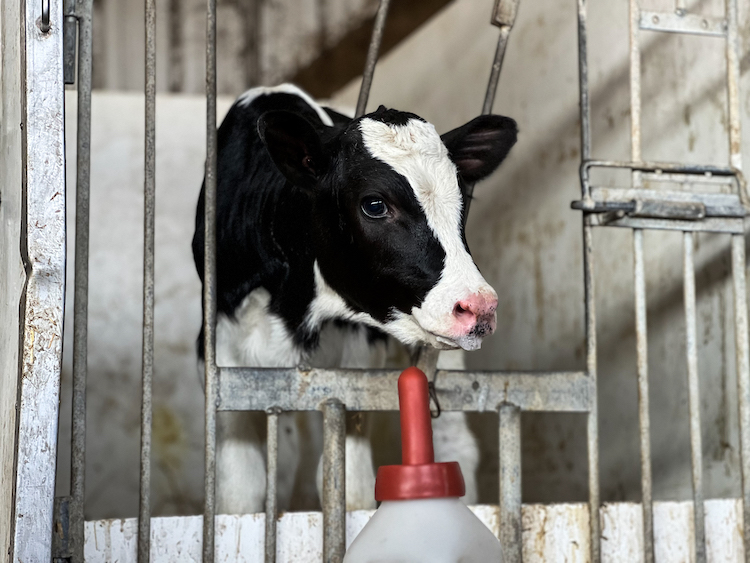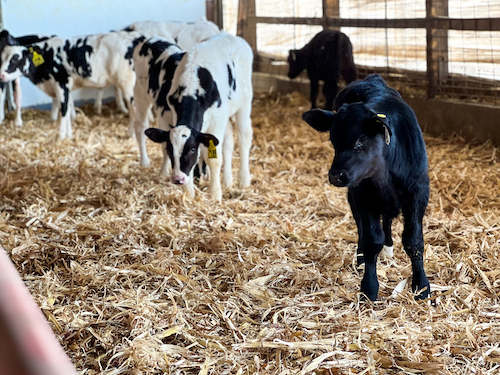
This week, I painted a few brushstrokes of pink and cream paints in our nursery in preparation for the birth of our baby girl in August. While this will be our first child, I will say that I am no stranger to nurseries — granted, I’m more familiar with the bovine kind.
On our farm, our calf building is the equivalent of the nursery for our bovine babies. Since my mom and I do most of the calf chores, we spend a lot of time in this building between feedings, bedding the pens, cleaning, moving calves between groups, updating records, and more. While we have plenty of adorable moments while being surrounding by the sweet baby calves, there are also frustrating, patience-testing, and disheartening moments accompanying these little bovines — just like we see with caring for human babes.
Over the late fall and winter months, we dealt with lots of illness with our calves. We tried multiple types of housing, veterinary testing, vaccines, medications, feeding techniques, and so on. No matter how committed we were to finding a solution, we kept coming up short and were constantly dealing with sick calves when they turned about one week old. While it was an expensive and time-intensive few months, it was above all else emotionally exhausting. It depleted our spirits as we tried tirelessly to figure out what was going on with our beloved calves.

We combined several desperate ideas to reset our individual calf pens within our calf building. These pens usually house bottle-fed calves until they’re about one week old and healthy enough to go into group housing using our automatic calf feeder within the same building. For a few weeks, all newborn calves were moved to our spare old wooden calf hutches outside. This is what we used to raise calves in when I was growing up.
With completely empty individual pens within our calf building, we got to work ridding them of any trace of the previous calves and possible disease. We dug every bit of manure and floor out of each pen, power washed everything, sprayed it all down with a chemical sanitizer, spread treated lime everywhere, and then let them sit empty for a few weeks.
After all those extra sanitizing measures and some patience letting it sit and dry out, we started bringing newborn calves back into these pens. Now, this is the part where anyone with a trace of superstition (this includes me) crosses their fingers and knocks on wood because, dare I say, one of those many things we tried must have done the trick. Since putting calves back into these completely reset pens, we have had zero illness. I think we’re all still holding our breath waiting for the other shoe to drop while also feeling a wave of relief that we were able to mitigate the issue.
Caring for these sweet creatures can take quite an emotional and physical toll, but the reward of watching healthy calves running and jumping around brings a smile to my face that makes it all worth it. This is the type of practice I’m getting for motherhood as we anticipate the arrival of our first child — and for that, I’m so very grateful.

The author dairy farms with her parents and brother near Hawkeye, Iowa. The family milks approximately 300 head of grade Holstein cows at Windsor Valley Dairy LLC — split half and half between a double-eight parallel milking parlor and four robotic milking units. In the spring of 2020, Molly decided to take a leap and fully embrace her love for the industry by returning full time to her family’s dairy.







